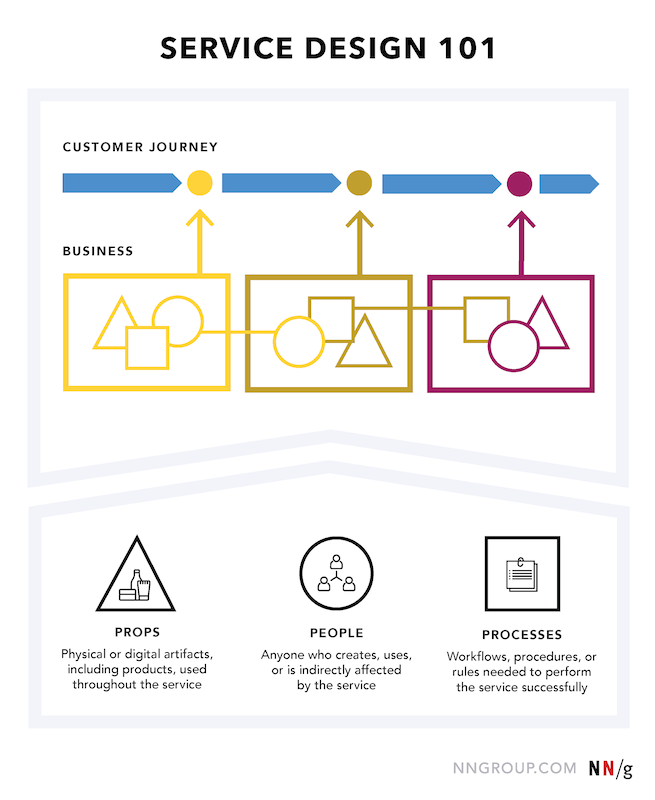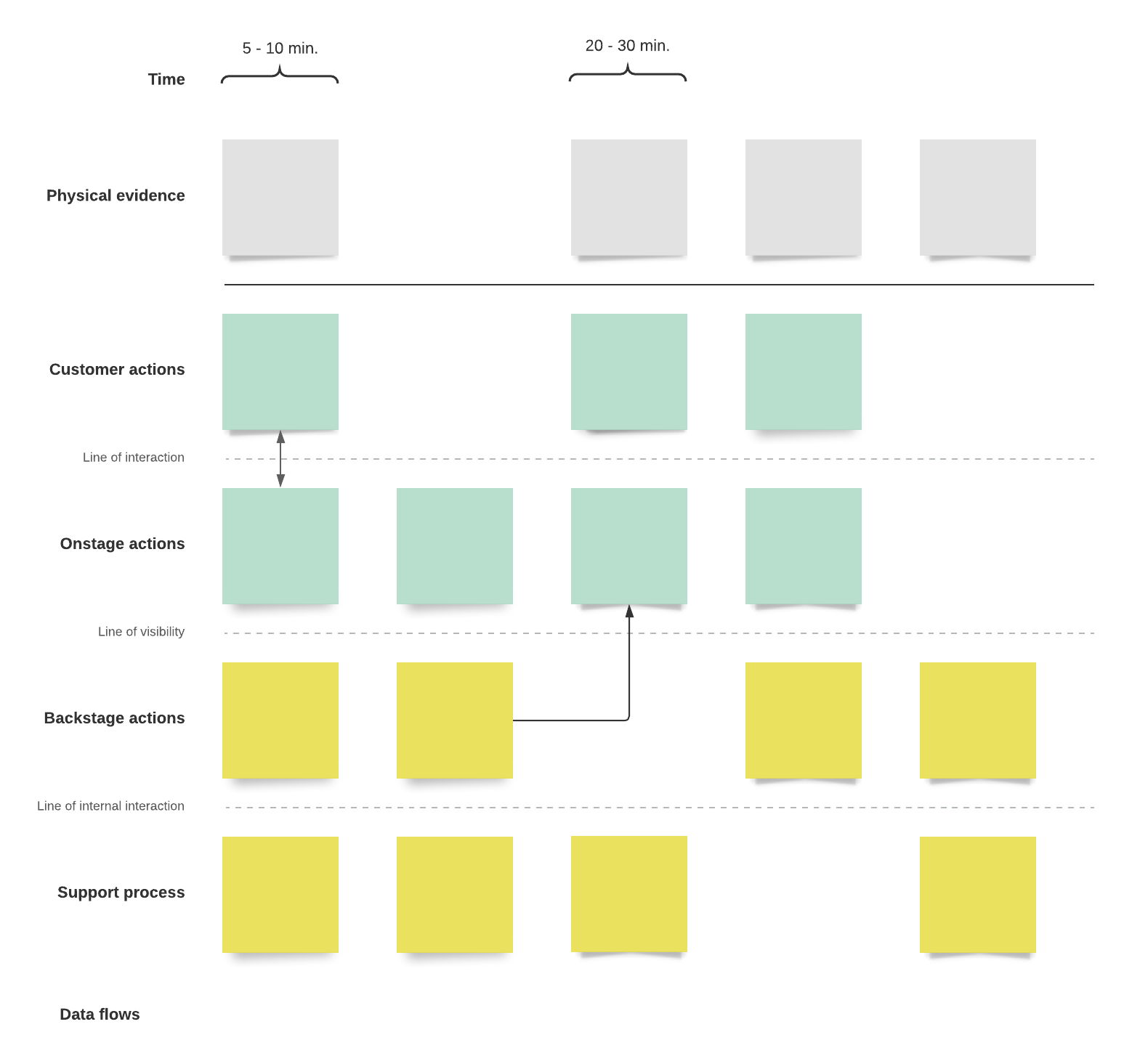Introduction
Everything that customers experience in the frontend requires that certain actions and tools work in the backend, in a certain way, following a certain process. The brand experience you want to deliver only happens if these operations are carried out they way they are expected or designed to. If they've never been 'designed' it's likely that things aren't going to plan. Service design can help discover and identify what these key operational steps are for your business/organisation, so you function efficiently, make changes quickly and at scale, and improve or evolve what the customer sees, feels, thinks and experiences overall.
What is Service Design?

Image: NNgroup summarising Service Design in an easy visual
Service design is the activity of planning and organising a business's resources (people, props and processes) in order to (1) directly improve the employee's experience, and (2) indirectly, the customer's experience.
An easy way to understand service design is to think of a theatre production. On the front stage you see the curtains open and you bear witness to a story unfolding with props and scenes set to match the script. You see people relaying that script making sure that the story is told well that makes it an experience to remember.
But none of this is easy. It's not a one-day thing.
There's a team of people, props and processes that all have to work in tandem to make the show a success (think director, production crew, stage decor, etc.). And if one thing fails, it impacts the show's experience for the audience. So, service design helps the customer journey shine by working on how things work in the background.
Why do I need a Service Design Blueprint?
Think about a service experience that you are trying to create at your business/organisation. Whether it's a product, service, event or live experience, it all requires that certain steps are completed by certain people to make sure that users of your product or attendees to your event feel like they have had memorable experiences that they'd like to share with others. To outline all the steps though, you need something that helps you visualise that. That's why we love our visual tool - a service blueprint.
An organisation's internal capabilities have a profound impact on the experience it can create. A service blueprint outlines how your organisation works and what needs to be done on the backend to deliver a truly quality experience to your customers.
To create a service design blueprint, think of a use case over time that involves your customer's experience, then map out what your organisation's backstage processes and systems are to make that experience happen. Chances are you'll see some inefficiencies and clear ways to improve the experiences your organisation can deliver.

Image: Service Experience Lifecycle
Some of the terms you'll need to know
Ecosystem
The collective whole of channels, services, touchpoints and interactions in your business.
Service
A specific offering that your organisation produces that acts in service to the customer.
Touchpoint
A single point of interaction between the customer and the services.
Channel
A specific medium in which interactions take place.
Role of Service Design in Digital Transformation
Simplifying and providing clarity is key to successful digital transformation. In mapping out what is happening on the backend to deliver a customer's journey, service design helps create an interconnected ecosystem of people, processes and tools that can create remarkable experiences.
To identify the critical moments or identify themes across your business that can truly help you transform - you need service design to create clarity and provide the simplicity required to implement the insights uncovered. Merging service design into your digital transformation process just makes sense!
We usually create quick blueprints that can be designed in 90 days and we've noticed that, while it's a design outcome, it's a beneficial implementation guide and playbook to organise people, process and tools being used within the organisation.
